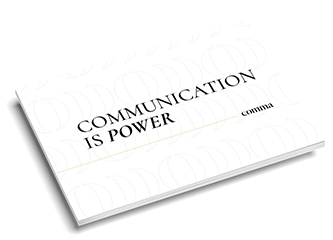Radio’s ability to withstand the onslaught of the profound transformation in content consumption habits is commendable. At a time of constant bombardment of information, which has led to low audience retention – attributable to an infoxication that overwhelms our cognitive capacities -, podcasting, and its visual variant, video podcasting, are establishing themselves as powerful tools for high content and greater depth, which has led to a veritable podcast fever.
When broadcasting celebrates its first century of life in Spain, it is clear that it has found in the Internet era a powerful tool that amplifies its reach and offers new possibilities. This phenomenon is evident in the way radio has quickly and effectively embraced digital platforms and new broadcasting spaces. Far from remaining confined to a niche audience, podcasts and video podcasts have experienced record growth in recent years and offer an enriching alternative for listeners, inviting them to immerse themselves in on-demand dialogues and narratives. These have integrated the format and have led Spain to stand out as the country where most podcasts are consumed in Europe (45%), contrary to what happens with traditional radio, according to a study by Funcas. The percentage is nine points higher than the average of 24 countries worldwide (36%), according to the Digital News Report Spain study of the University of Granada.
This evolution marks a turning point for communicators, influencers and brands, who see in podcasting a unique opportunity to connect with their audiences through content that not only informs, but also educates and transforms. Whether venturing into in-house production or participating in third-party spaces, it is necessary to deploy an appropriately designed strategy for this format, whose proliferation has no signs of slowing down in the short and medium term.
The data support the podcast fever

Reports suggest that in 2023, there were some 460 million podcast listeners globally and this figure is expected to reach 504.9 million by the end of 2024. Dosdoce.com projections indicate that “digital radio products in Spain will reach an audience of 26.6 million listeners in 2026, experiencing an annual growth of up to 30%”. This increase in audience is expected to boost industry revenues to €590 million, leveraging various monetisation strategies such as advertising, sponsored content and subscriptions.
According to the Spotify’s report “Podcasts Trends 2023”, one in ten listeners who visit an advertiser’s website or app after listening to a podcast advert, makes a purchase and one in six takes a desired action, like signing up to an email marketing list. This means that these engaged audiences are not just listeners: they are already in the buying process, which opens a window of opportunity for brands wishing to deploy their activity in this format and integrate audio and video content into their own channels.
However, at a time when, there are currently around 500,000 podcast in Spanish, according to the iVoox 2023 Observatory, the sophistication in the production and broadcasting of content establishes a kind of natural selection and professionalization becomes essential. Especially when it comes to a brand’s audiovisual product, the audience is becoming more and more demanding and not just anything goes. Therefore, raising the quality is an element that adds to the reputation of a company or a influencer, as audiences set and demand new standards – both visual and audio – forcing content creators to live up to the new bar.
Emergence of podcasting in traditional media: how to participate?
Likewise, the analysis conducted by Dosdoce.com reveals that entities in the Spanish audio industry belong mainly to three economic activities: production companies, streaming platforms and, especially, “22.10% are media outlets seeing their communities grow with this new format.”
Based on these data, it is necessary to integrate into a communication strategy and media relations, participation in these spaces, both those produced by traditional broadcasters, networks and newspapers, as well as other programmes led by relevant personalities who have a critical mass of followers among our target audiences. It is also an effective way to enhance spokespersons’ thought leadership, broaden the reach of key company messages, improve brand recognition and connect more deeply with audiences.
To effectively incorporate this tactic as an activity of the press office, consider the following recommendations:
- Identify relevant podcasts. Those programmes whose subject matter fits with an economic sector; also those whose audience is aligned with the company’s values or strategic lines of communication. Both popular and niche specific podcasts with more engaged listeners should be considered.
- Deliver value. Before initiating any outreach, we must identify what value they offer to their audience. It could range from a unique perspective on a topic, insights from a subject matter expert, to inspirational or educational stories.
- Prepare the message. Define the key points of the brand, products or services to be referred to in that collaboration, as well as any call to action that needs to be incorporated.
- Train spokespersons. Because of its mainly audio nature, it is crucial that the delivery of the message during participation in a podcast is clear and engaging and it is advisable to have prepared answers to common questions. It is advisable to train, record our spokespersons and let them listen to themselves in order to perfect themselves. Naturalness and storytelling skills are essential in this format.
- Apply basic tips on radio voice-over. Good diction, vocalisation, cadence of speech – neither too fast nor too slow -, standing an inch away from the microphone, wearing headphones during participation and not accidentally knocking against the furniture are basic precepts when participating in these spaces.
- Promote participation. Include this collaboration in the brand’s milestone promotion strategy, sharing the news with the audience through your own channels, such as newsletters, social media and website.
- Assess impact. Analyse the impact in terms of web traffic, engagement on social media, sales enquiries or any other relevant metrics, in order to understand ROI and adjust future strategies.
- Establish long-term relationships. Beyond a one-off participation, it is advisable to open the door to future collaborations, recurrent participations or even sponsorship opportunities.
Branded pódcast

As we have been reflecting, the podcasting today favours the expansion of audio content, and more than a few brands are considering developing their own personalised, on-demand radio slots.
In fact, the integration of audio into brands’ digital marketing strategies has also seen an unprecedented boom, positioning the corporate podcasts as key tools for companies looking to connect in a deeper and more personalised way with their audience. In 2023, the proliferation of branded podcasts has been remarkable, according to the iVoox Observatory, each taking unique approaches that reflect the company’s values and goals, while delivering relevant and engaging content to listeners.
Among the most outstanding themes and programmes, the podcasting highlights:
- Sustainability and corporate social awareness like Repsol with its podcast “The Energy that Moves Us” or “GREENFLAGS” of Greenpeace.
- Brands like Cabify with “Your journey begins today” and Carrefour with “Out of Place” choose to tell fascinating stories or interviewing influential people, immersing listeners in unique experiences that challenge prejudices and broaden horizons, creating a strong emotional bond with your audience.
- Other podcasts capture the attention of fans and establish themselves as authoritative sources of entertainment and culture, fostering brand loyalty through shared passion. In this area, it is worth highlighting “Fanáticos” by FNAC.
- The disclosure on a topic of interest to the brand is key in programmes such as “Bring out the investor in you” by SelfBank, or programmes “The green elephant”, by comma or “The Crypto Mode oracle”, in which comma collaborates with the driving brand, Modo Cripto; without neglecting to cite the space “Blockchain Bites” by Alastria, or “Cripto Jungle”, by Valentín Santamaría. These spaces not only inform but also empower listeners with practical tools and knowledge, reinforcing the image of the brand or influencer as an expert in the field.
Own production or third-party programmes? Pros and cons
At this point, it is abundantly clear that participation in podcasts is, nowadays, essential, both for brands and for spokespersons and influencers looking for enhancing and projecting your personal image. The big question is whether or not deploy a strategy of partnerships with programmes already settled or venture into production of your own product. Let’s look at the pros and cons of both options.
Participation in third party programmes
Advantages
- Access to established audiences: instant access to loyal listeners of popular podcasts is achieved, quickly expanding reach.
- Cost-efficiency:requires fewer financial and time resources compared to producing your own programme.
- Credibility by association: partnering with well-established and respected podcasters can elevate brand credibility.
- Flexibility: it allows you to explore different audiences and niches without the commitment of producing content on a regular basis;
Disadvantages
- Less control: the ability to control content and narrative is limited, depending on the host and format of the third-party podcast.
- Limited availability: the opportunity to participate in popular or niche podcasts can be limited and highly competitive;
- Competition for attention: you may compete with other guests for the audience’s attention, which can dilute the impact of the message.
- Fewer opportunities for personalisation: the ability to include specific key brand messages or directly promote products or services is restricted.
Own production
Advantages
- Total control: Full control is maintained over the content, format, frequency and tone of the programme, allowing for perfect alignment with brand and communication objectives.
- Content flexibility: a wide range of topics, formats and styles can be explored to maintain audience interest and attract new listeners.
- Positioning as a thought leader: it is facilitated to establish the brand as an authority in its industry by providing content of educational, informative and entertaining value.
- Community building: the opportunity is provided to build and nurture a dedicated community around the brand, promoting loyalty and long-term engagement.
Disadvantages
- Resources required: it takes a significant investment in time, money, technical and human resources to produce a quality podcast.
- Learning curve: it is facing a learning period in terms of audio production techniques, podcast marketing and audience engagement.
- Regular content production: maintaining a content calendar with a fixed periodicity can be challenging, especially for small teams or brands with limited resources.
- Audience building: Developing an audience from scratch can be time-consuming and require consistent and strategic marketing efforts.
Not only content is king
In the podcasting, as in any communicative activity, content is always king, but in this case it is accompanied by a court of elements that, depending on our skills, elevate or distort the emission of the message. Therefore, before embarking on in-house production we must ensure that we have well-trained spokespeople, we comply with the technical requirements of the medium and we have the capabilities to pull off a programme; and be consistent in terms of periodicity of episodes and seasons.
It is also vital to assess the possibility of generating a return on investment, ensuring that the cost-benefit ratio is favourable. Without these elements, the risk of failure or cost overruns is high. Therefore, if after careful analysis it is concluded that these conditions are not met, it may be more prudent to opt for alternative strategies. Collaborating and participating in already established podcasts, taking advantage of their loyal audiences and technical infrastructure, presents itself, in these cases, as a safer and more profitable route. This approach allows brands to enter the podcast in Spain without assuming the risks and costs associated with in-house production, thus maximising the opportunities for success in this expanding medium.







